Find Help
More Items From Ergsy search
-

Leg amputation and life afterwards
Relevance: 100%
-
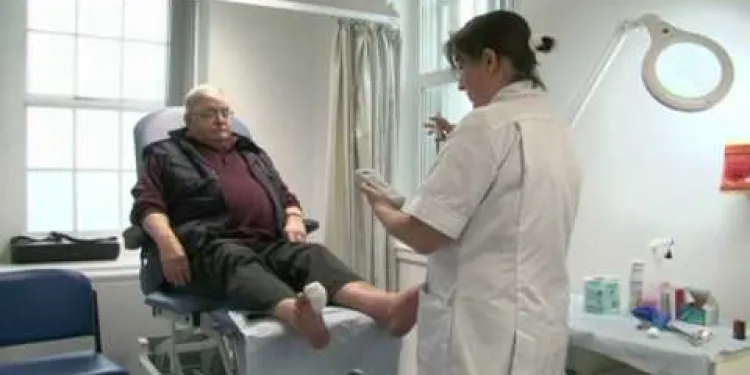
Diabetes Care - Preventing Amputations
Relevance: 35%
-
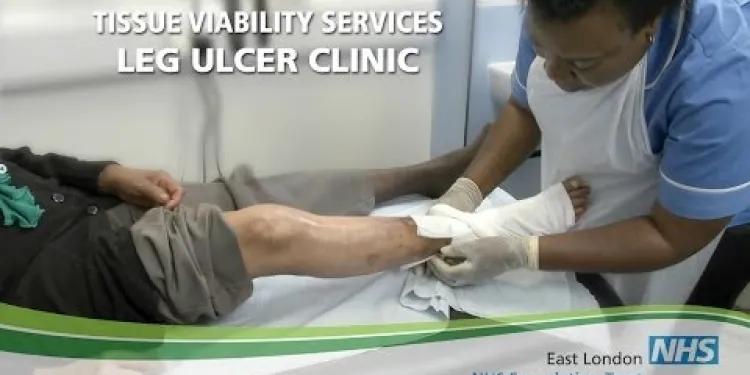
Leg ulcer see Venous leg ulcer
Relevance: 31%
-
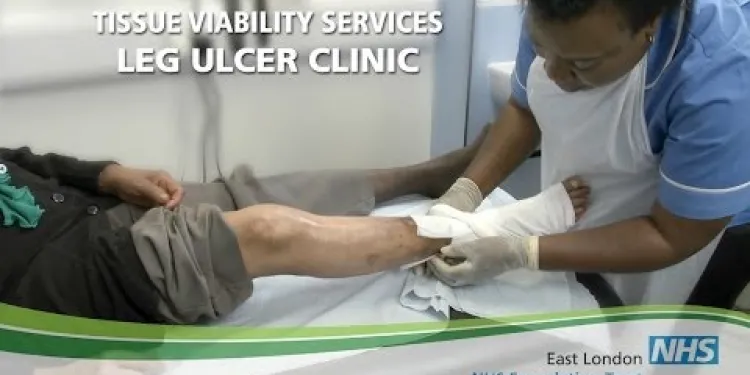
Leg Ulcers
Relevance: 30%
-

What to do about red legs
Relevance: 27%
-

Should You Get Life Insurance UK | Life Insurance & Life Assurance
Relevance: 22%
-
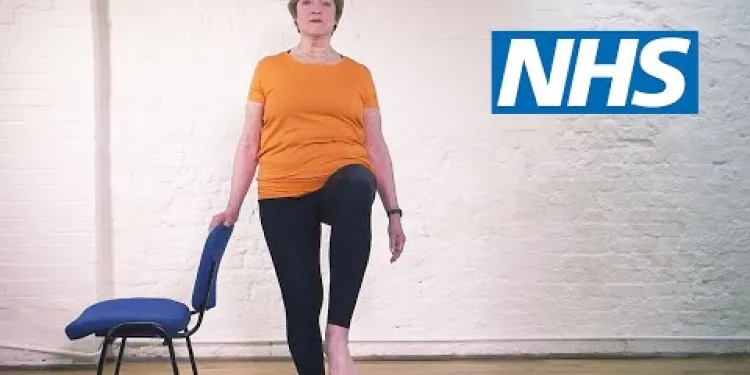
Pilates for back pain: Standing on one leg | NHS
Relevance: 21%
-

What is end of life care?
Relevance: 19%
-

Does life insurance cover funeral costs?
Relevance: 17%
-

How does inheritance tax apply to life insurance policies?
Relevance: 15%
-

What is the life expectancy after a motor neurone disease diagnosis?
Relevance: 15%
-

Can nut allergies develop later in life?
Relevance: 15%
-

Life Insurance Difference between Unit Linked and With Profit Policies
Relevance: 14%
-
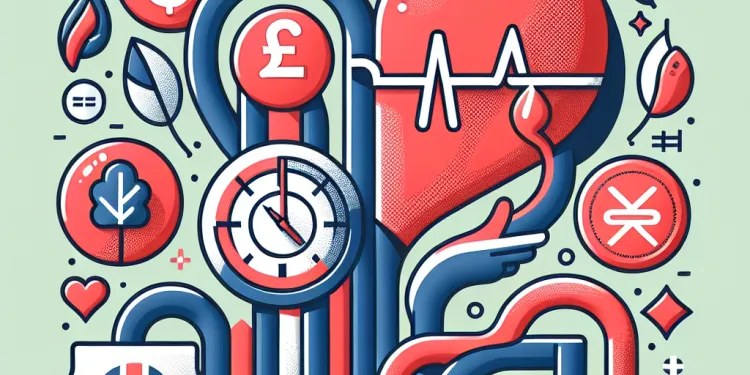
What are the symptoms of arterial thrombosis?
Relevance: 14%
-

How does Alzheimer's affect daily life?
Relevance: 14%
-

Divorce - How To Rebuild Your Life After Losing Everything
Relevance: 13%
-

What complications are associated with Type 2 Diabetes?
Relevance: 13%
-
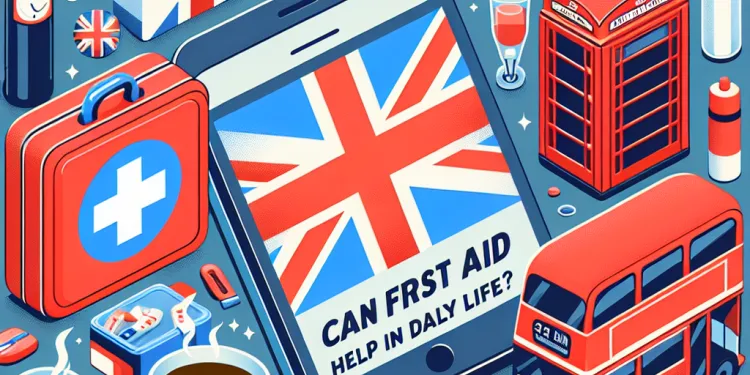
Can first aid skills help in daily life?
Relevance: 13%
-
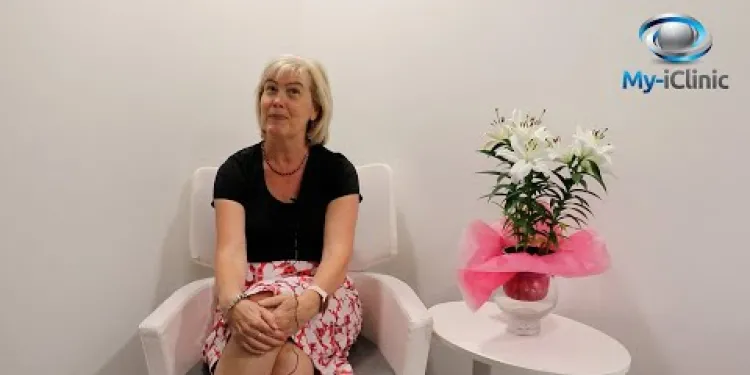
Cataract surgery can resolve life long short-sightedness?!
Relevance: 13%
-
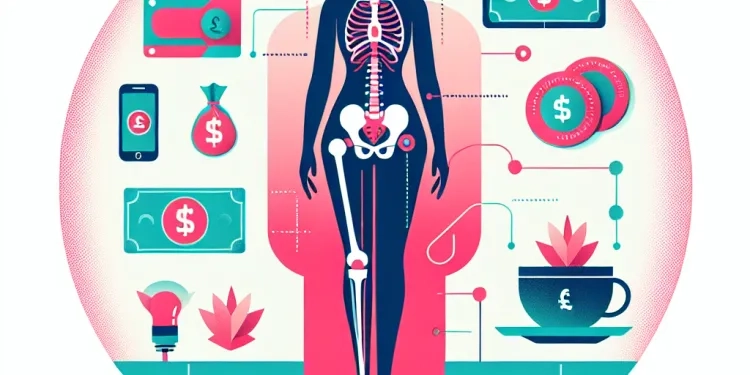
What are the risks associated with hip replacement surgery?
Relevance: 12%
-

How can mobility equipment improve quality of life?
Relevance: 12%
-

North Yorkshire Diabetic Eye Screening Programme - A day in the life
Relevance: 11%
-

What are the symptoms of deep vein thrombosis (DVT)?
Relevance: 11%
-
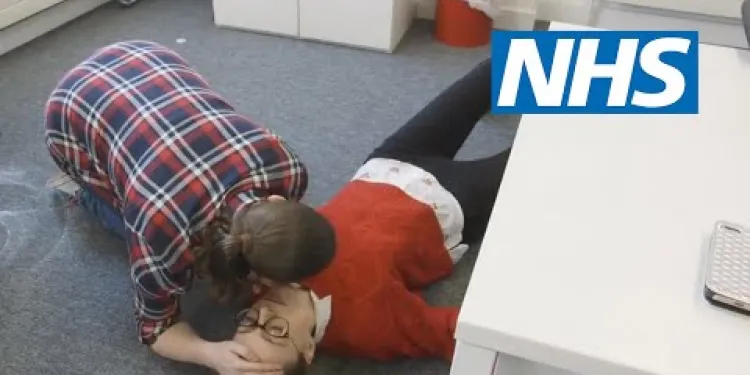
How to put someone into the recovery position | NHS
Relevance: 10%
-

How big can spiders in the UK get?
Relevance: 9%
-
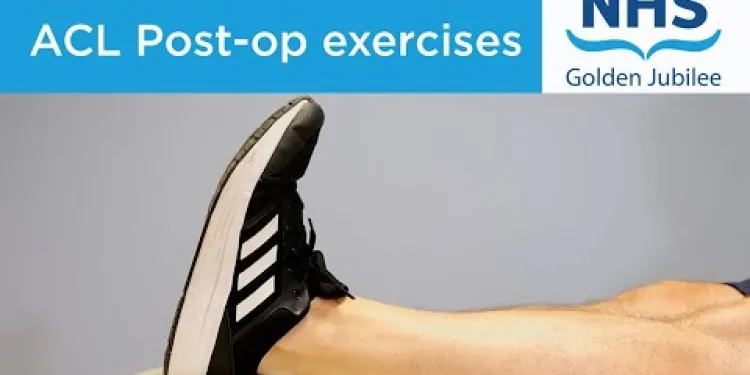
ACL exercises post-operation
Relevance: 9%
-

Falls Prevention - strength and balance exercises
Relevance: 9%
-
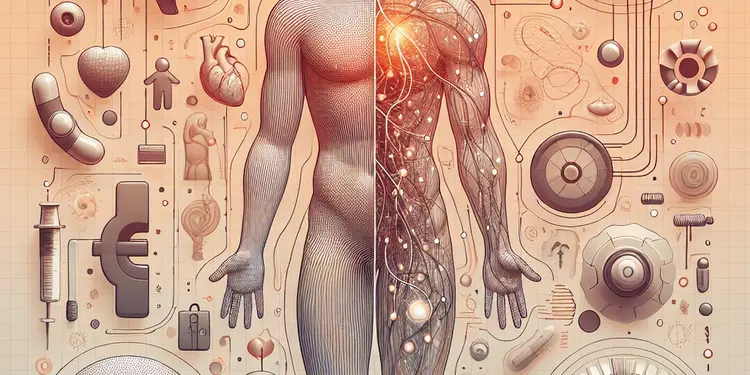
How does motor neurone disease affect the body?
Relevance: 8%
-
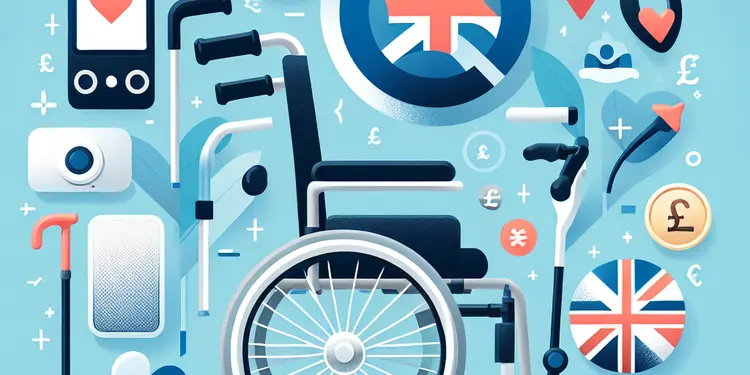
What are common types of mobility equipment?
Relevance: 8%
-
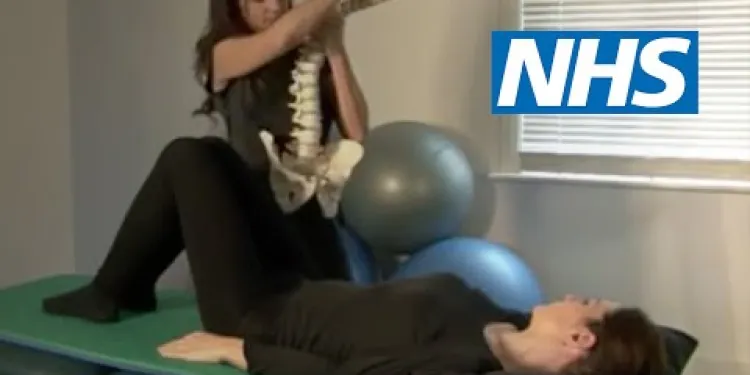
Exercises for sciatica: herniated or slipped disc | NHS
Relevance: 8%
-
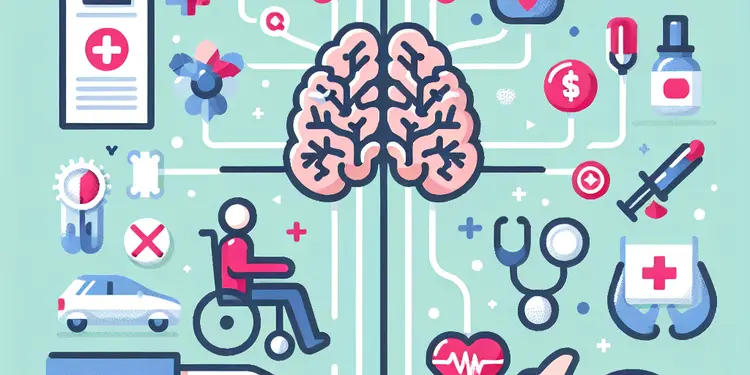
What are the primary symptoms of motor neurone disease?
Relevance: 8%
-
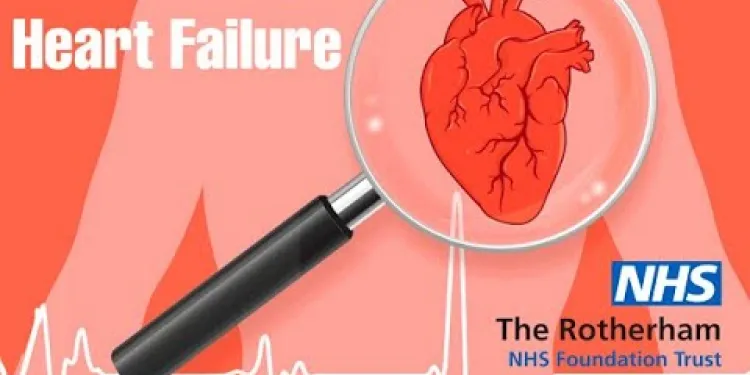
Heart Failure : What is heart failure?
Relevance: 8%
-
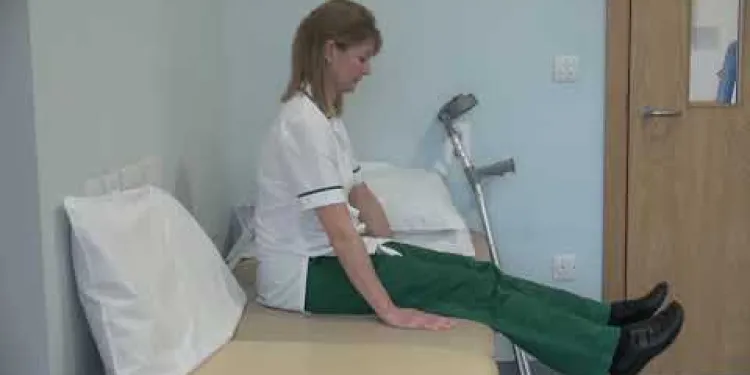
Hip replacement - getting into bed
Relevance: 8%
-
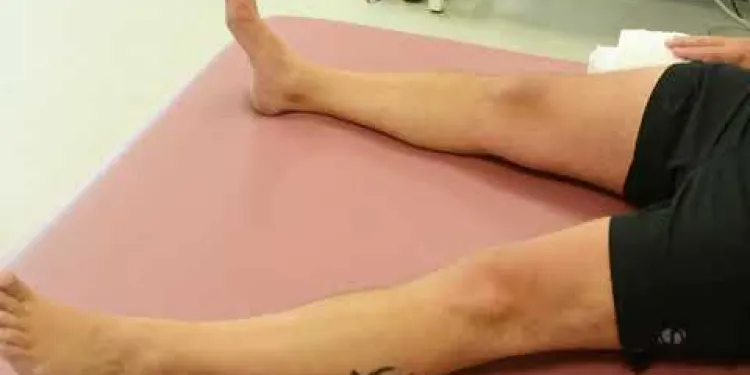
Joint School - Hip Exercises
Relevance: 8%
-
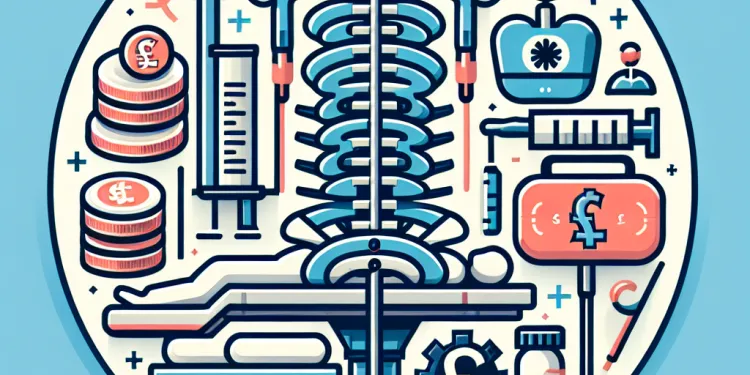
What should I do to prepare for spinal anaesthesia?
Relevance: 8%
-
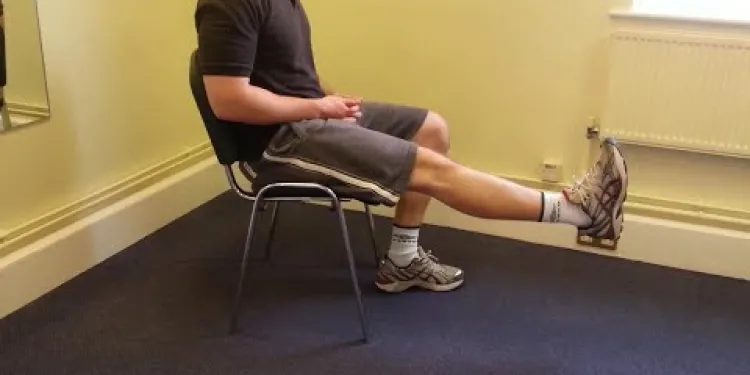
Knee Care Exercises
Relevance: 8%
-

What should I wear for exercising during pregnancy?
Relevance: 7%
-
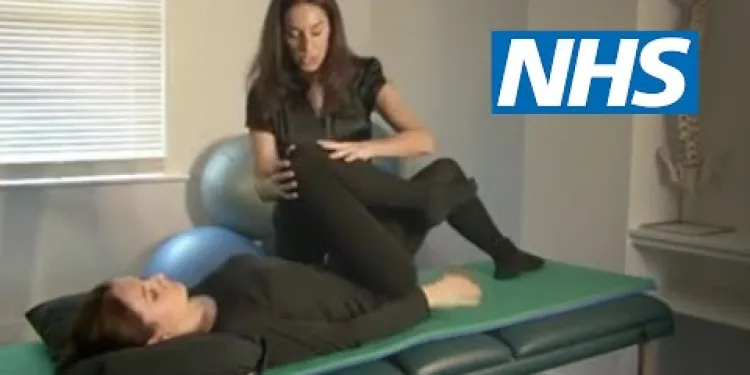
Exercises for sciatica: spinal stenosis | NHS
Relevance: 7%
-

Are there different types of heart failure?
Relevance: 7%
-
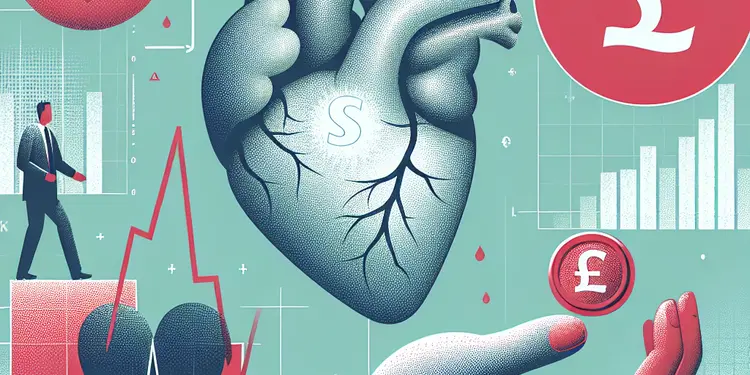
What should I do if I experience symptoms of heart failure?
Relevance: 7%
Understanding Leg Amputation and Life Afterwards in the UK
What is Leg Amputation?
Leg amputation refers to the surgical removal of a part of the leg, such as a foot, below the knee, or above the knee. It is a procedure usually performed due to severe trauma, infection, diabetes-related complications, or other medical conditions. In the UK, the NHS provides comprehensive support before, during, and after the surgery to ensure optimal outcomes for patients.
Post-Amputation Rehabilitation
Rehabilitation is a critical phase following leg amputation. In the UK, rehabilitative services may include physical therapy, occupational therapy, and psychological counseling. The NHS provides these services to help individuals regain mobility, adapt to their new circumstances, and maintain their mental well-being. Rehabilitation can also involve learning to use prosthetic limbs to improve functionality and independence.
Adjusting to Prosthetics
Modern prosthetics aim to provide a high degree of mobility and comfort. In the UK, prosthetic technicians and physiotherapists work closely with amputees to tailor prosthetic limbs to their specific needs. Training on the use of prosthetics is crucial for everyday tasks and achieving better quality of life. Regular follow-ups ensure that the prosthetic fits well and functions properly.
Emotional and Psychological Support
The emotional and psychological impact of a leg amputation cannot be understated. The UK health system offers various support networks, including counseling services and support groups. Connecting with others who have undergone a similar experience can be immensely beneficial, providing emotional support, practical advice, and a sense of community.
Benefits and Social Services
Individuals who undergo leg amputation in the UK can access a range of benefits and social services. These include disability living allowance, personal independence payments, and mobility schemes. Local councils and disability charities also offer additional support and resources to help amputees live independently.
Conclusion
Life after a leg amputation presents numerous challenges, but with the extensive support available in the UK, many individuals lead fulfilling and active lives. Comprehensive medical care, rehabilitation, prosthetic services, and emotional support collectively facilitate the journey towards recovery and adaptation.
Understanding Leg Amputation and Life Afterwards in the UK
What is Leg Amputation?
Leg amputation means removing part of the leg. This could be the foot, below the knee, or above the knee. Doctors do this because of a serious injury, infection, diabetes, or other health problems. In the UK, the NHS helps patients before, during, and after the surgery.
Post-Amputation Rehabilitation
After a leg amputation, you go through rehabilitation. This means getting help to move and feel better. In the UK, you can get physical therapy, occupational therapy, and talk to someone about your feelings. The NHS gives you these services to help you get strong and feel good. You might also learn to use a new leg called a prosthetic.
Adjusting to Prosthetics
Prosthetics are new legs that help you move. In the UK, experts make sure the new leg fits just right for you. They teach you how to use it so you can do everyday things. Regular check-ups help make sure the prosthetic works well and feels comfortable.
Emotional and Psychological Support
Feeling sad or worried after losing a leg is normal. In the UK, you can talk to counselors and join support groups. Meeting others who have lost a leg can be very helpful. They can give you advice and make you feel part of a community.
Benefits and Social Services
In the UK, if you lose a leg, you can get help from benefits and social services. You can get money and other support to help you live well. Local councils and charities can also provide extra help so you can live independently.
Conclusion
Losing a leg is tough, but in the UK, you can get lots of support. With good medical care, rehabilitation, prosthetics, and support for your feelings, many people live happy and active lives after losing a leg.
Frequently Asked Questions
What are the main reasons for leg amputation?
The main reasons for leg amputation include severe trauma, peripheral arterial disease, diabetes, cancer, and severe infections that are unresponsive to other treatments.
How long does the recovery process take after a leg amputation?
Recovery time varies but typically ranges from a few weeks to several months. It largely depends on the individual's overall health, the cause of the amputation, and the type of surgery performed.
What kind of rehabilitation support is available in the UK after a leg amputation?
In the UK, rehabilitation support includes physiotherapy, occupational therapy, psychological counselling, and access to prosthetic services. The NHS offers comprehensive rehabilitation care to help individuals regain their independence.
Are there financial supports available for amputees in the UK?
Yes, financial supports are available, including Personal Independence Payment (PIP), Employment and Support Allowance (ESA), and Access to Work grants. These benefits help cover living costs, medical expenses, and help towards work-related expenses.
Can I drive after a leg amputation?
Many individuals can return to driving after a leg amputation, often with modifications to the vehicle or use of prosthetics. It's important to inform the DVLA and update your driving license to reflect any health changes.
What types of prosthetics are available for leg amputees?
There are various types of prosthetics available, including basic mechanical limbs, advanced myoelectric prosthetics, and activity-specific limbs designed for activities like running or swimming.
Can I still engage in sports and physical activities after a leg amputation?
Yes, many amputees continue to engage in sports and physical activities. Adaptive equipment and specialized prosthetics enable participation in a wide range of sports, from walking and running to cycling and swimming.
How can I manage phantom limb pain?
Phantom limb pain can often be managed with medications, physical therapies, mirror therapy, and in some cases, alternative treatments such as acupuncture. It's best to discuss treatment options with your healthcare provider.
What kind of lifestyle changes should I expect after a leg amputation?
Lifestyle changes may include adaptations to home and work environments, incorporating assistive devices, engaging in regular physiotherapy, and possibly modifying daily routines to manage tasks more effectively.
Will I need to adjust my diet after a leg amputation?
It's important to maintain a balanced diet that promotes healing and overall health. Nutritional needs may change, particularly if you have underlying conditions like diabetes. Consulting a dietitian can be beneficial.
How can I cope emotionally after a leg amputation?
Emotional coping strategies include seeking support from family and friends, joining support groups, and working with mental health professionals. Counselling and therapy can help address feelings of loss, anxiety, and depression.
Is it safe to go back to work after a leg amputation?
Many people return to work following recovery, sometimes with workplace adjustments. Occupational health assessments can help determine the best approach to resuming work safely and comfortably.
What follow-up care is needed after a leg amputation?
Follow-up care includes regular check-ups to monitor the residual limb, fittings and adjustments for prosthetics, management of any complications, and ongoing rehabilitation support.
How can technology help improve quality of life for leg amputees?
Advancements in prosthetic technology, such as bionic limbs and smart prosthetics, improve mobility and independence. Assistive devices, home automation, and adaptive technology can further enhance quality of life.
Where can I find support groups and resources for amputees in the UK?
Support groups and resources can be found through organizations like the Limbless Association, the Douglas Bader Foundation, and local NHS services. Online communities and charities also provide valuable support and information.
What are the main reasons for leg amputation?
Why do some people need to have their leg removed?
- Bad Injury: Sometimes the leg is hurt very badly in an accident, and doctors cannot fix it.
- Severe Infection: A bad infection that does not go away can make doctors remove the leg to stop the infection from spreading.
- Blood Flow Problems: If blood cannot get to the leg, it can cause serious problems. Sometimes, removing the leg is the best choice.
- Diabetes: People with diabetes can have problems with their legs and feet. If the problem is too big, doctors might need to remove the leg.
- Cancer: If cancer is in the leg and cannot be treated in another way, removing the leg might help.
Tools and Tips:
- Ask for help: If you do not understand something, ask someone you trust to explain.
- Use pictures: Looking at pictures can help you understand better.
- Take your time: Read slowly, and take breaks if you need to.
The main reasons someone might need to have a leg removed are:
- Bad injury.
- Blocked blood vessels.
- Diabetes.
- Cancer.
- Serious infections that medicine can't fix.
If you want help reading, you can use tools like text-to-speech apps or picture dictionaries. These can make it easier to understand.
How long does it take to get better after losing a leg?
Getting better after losing a leg can take some time. It is different for everyone. Here are some things that can help:
- Physiotherapy: This is special exercise to make you strong and help you move better.
- Using a prosthetic leg: This is an artificial leg that you can use to walk.
- Talking to doctors and therapists: They can help you feel better and answer your questions.
Remember, everyone gets better at their own speed. Be patient and ask for help when you need it.
How long it takes to feel better after an amputation can be different for everyone. It can take a few weeks or even several months. This depends on how healthy you are, why you had the amputation, and the kind of surgery you had.
What help can you get in the UK after losing a leg?
If you lose a leg, there are people and things that can help you feel better and learn to do things again.
Here is some help you can get:
- Doctors and Nurses: They can take care of you and check how you are healing.
- Therapists: They can help you learn to move and walk again.
- Prosthetics: These are special legs that can help you walk.
- Support Groups: You can talk to people who have also lost a leg.
Here are some tools and tips to help you:
- Use a wheelchair or crutches: They can help you move around.
- Have a planner: A notebook can help you remember appointments.
- Ask for help: Friends and family can help with daily tasks.
In the UK, there is help for getting better. This includes physiotherapy, where you do exercises to move better. There is also occupational therapy, which helps you with daily activities like eating and dressing. You can talk to a counsellor if you feel upset or worried. If you need a new arm or leg, there are special services to help with that too. The NHS is there to help people become independent again.
Can amputees in the UK get money help?
If you lost a limb and live in the UK, you might get money help. This can help you pay for things you need.
Here are some tips to help you:
- Check if you can get money help from the government. You can ask at your local council or look online.
- Some groups can give you advice. Look for charities that help people with disabilities.
- Talk to a friend or family member who can help you find out more.
- Use a computer or tablet with tools that can read text out loud to help understand more easily.
Yes, you can get money help. There are different types of support like Personal Independence Payment (PIP), Employment and Support Allowance (ESA), and Access to Work grants. This money can help you pay for living costs, medical bills, and things you need for work.
Can I drive after losing a leg?
Yes, you might be able to drive after losing a leg. You will need special changes to the car to help you. These are called adaptations. You can use things like hand controls or an automatic car. Ask your doctor for advice. You can also talk to a driving instructor who knows about this.
Many people can drive a car after losing a leg. They might need to change the car a little bit or use special new legs. It's important to tell the DVLA about what happened and change your driving license.
What kinds of artificial legs can people use?
People who have lost a leg can get special legs called prosthetics. These help them walk and move.
Here are some types of prosthetics:
- Basic Prosthetic Leg: This helps with simple walking.
- Sports Prosthetic Leg: This is for running and playing sports.
- High-Tech Prosthetic Leg: This has special parts to make moving easier.
Tools that help:
- Pictures: Look at pictures to see what each prosthetic looks like.
- Videos: Watch videos to learn how they work.
- Visit a professional: Talk to a doctor or helper who knows about prosthetics.
There are different types of fake body parts to help people. Some are simple arms or legs. Some use electricity to move. Others are made for special activities, like running or swimming.
Can I play sports after losing a leg?
Yes, you can still play sports after losing a leg. Many people do!
Here are some tips to help you:
- Talk to your doctor first. They will help you find safe activities.
- You might use a special leg or a wheelchair during sports.
- Take your time to learn and practice.
- You can join clubs or teams for people with disabilities.
Stay positive and have fun!
Yes, people who have lost a limb can still play sports and do activities. There are special tools and prosthetics that help them. They can walk, run, ride bikes, and swim.
How can I help with pain where my limb used to be?
Here are some simple ways to help with pain where your limb used to be:
- Try moving around slowly and gently.
- Get a massage to feel better.
- Use special warm or cold packs.
- Talk to a doctor about medicines that can help.
- Listen to calming music.
If you need help, ask a trusted person or your doctor for advice. They can help you find more ways to feel comfortable.
If you have pain where a limb used to be, these things might help: medicine, exercises, using a mirror, or trying acupuncture. Talk to your doctor about what might work best for you.
What changes will happen in my life after I lose a leg?
If you lose a leg, your life will change. Here is what might happen:
- You might need a wheelchair or crutches to move around.
- You could use an artificial leg. This is called a prosthetic.
- You may need to do exercises to get strong and balanced.
- Your house might need changes like ramps or railings.
- You might need help with some daily tasks.
- You could see a counselor to talk about your feelings.
Here are some things that can help you:
- Physical therapy can help you exercise and get strong.
- Occupational therapy can help you learn new ways to do things.
- Support groups can help you meet people with the same experience.
- Your doctor or nurse can give you advice and support.
Change how you live so things can be easier. This might mean changing things at home or where you work. You might use special tools to help you. Doing exercises with a physiotherapist can help too. Changing your daily habits can also make you feel better. Try to make a plan for how to do things each day.
Do I need to change my food after losing my leg?
Eating healthy food helps you feel better and get better when you are sick. Your body might need different foods if you have conditions like diabetes. Seeing a food expert, called a dietitian, can help you know what foods to eat.
How can I feel better after my leg is removed?
Losing a leg can be really hard. Here are some tips to help you feel better:
- Talk to someone: Sharing your feelings with a friend or family can help.
- Join a group: Meet others who have lost a leg. They understand how you feel.
- Write it down: Keep a diary. Write your feelings and thoughts. This can help you feel better.
- Do things you enjoy: Painting, listening to music, or watching movies can make you happy.
- Ask for help: It is okay to ask for support from a doctor or therapist.
Remember, it is okay to feel sad. You are not alone, and people are there to help you.
Ways to feel better when emotions are hard include talking to family and friends who care about you. You can also join groups where people help each other, or talk to someone like a counselor. They can help you feel better if you are sad or worried.
Can I go back to work after losing a leg?
If you lost your leg, it's okay to ask if you can work again. It is important to talk to your doctor. They can tell you when it's the right time to go back.
Here are some things that can help:
- Ask your doctor or nurse for advice.
- Use a walking aid if you need it.
- Ask if you can have a wheelchair.
- See if you can work from home sometimes.
- Listen to your body. Rest if you get tired.
Be patient with yourself. It takes time to get used to things. You can do it!
Lots of people go back to work after they get better. Sometimes, they need some changes at work to help them. There are special checks that can help decide the best way to make going back to work safe and easy.
Using apps that read text aloud or getting help from someone can also make reading easier.
What care is needed after losing a leg?
After losing a leg, you will need special care to help you get better and learn new ways to move. Here is what you might need:
- Regular doctor check-ups to make sure you are healing well.
- Visits to a therapist who will help you learn how to use a new leg (called a prosthetic leg).
- Exercises to keep your other leg and body strong.
- Help to learn how to move around safely.
- Talking to someone if you feel sad or worried.
It can be good to use tools like reminder apps for appointments or ask someone to help you keep track of your care.
Aftercare includes going to the doctor for regular check-ups. This helps keep an eye on your healing. You will also need fittings to make sure your prosthetic fits well. The doctor will help if there are any problems. You will keep getting help to get better and stronger.
How can technology make life better for people with one leg?
Technology can help make life easier for people who have lost a leg. Here are some ways it can help:
- Prosthetic Legs: Special legs called prosthetics help people walk and do daily activities. New prosthetics are lighter and more comfortable.
- Wheelchairs: Modern wheelchairs are easier to move around in and can make going places more fun.
- Smart Devices: Phones and tablets can remind people to take medicine or go to appointments. They can also connect to other helpful tools.
- Exercise Apps: Apps can show fun exercises to stay strong and healthy.
Here are some things that can help:
- Support Groups: Talk to others who have lost a leg. Learn tips and make friends.
- Physical Therapy: Try exercises with a therapist to move better.
- Mindfulness: Practice being calm and happy.
Technology can help people feel more confident and live a happy life.
New technology is making fake arms and legs better. These are called bionic limbs and smart prosthetics. They help people move better and do things on their own.
There are also special tools and technology for the home. These can make life easier and better for people with disabilities.
Where can I find help for people who have lost a limb in the UK?
If you are looking for help because you have lost a leg or arm, there are many places you can go in the UK.
Here is what you can do:
- Ask your doctor or nurse. They can tell you about groups near you.
- Look online. Use a computer or a tablet to search for groups that help people who have lost a limb.
- Call a helpline. Some charities have phone numbers you can call to talk to someone who can help.
Also, you can get support from:
- Talking to other people who have lost a limb. They can share their stories and give advice.
- Using special apps or websites made for people who have lost a limb.
You can find help and support from places like the Limbless Association, the Douglas Bader Foundation, and local NHS services. There are also online groups and charities that give good help and information.
Useful Links
- Ergsy carfully checks the information in the videos we provide here.
- Videos shown by Youtube after a video has completed, have NOT been reviewed by ERGSY.
- To view, click the arrow in centre of video.
- Most of the videos you find here will have subtitles and/or closed captions available.
- You may need to turn these on, and choose your preferred language.
- Go to the video you'd like to watch.
- If closed captions (CC) are available, settings will be visible on the bottom right of the video player.
- To turn on Captions, click settings .
- To turn off Captions, click settings again.
More Items From Ergsy search
-

Leg amputation and life afterwards
Relevance: 100%
-

Diabetes Care - Preventing Amputations
Relevance: 35%
-

Leg ulcer see Venous leg ulcer
Relevance: 31%
-

Leg Ulcers
Relevance: 30%
-

What to do about red legs
Relevance: 27%
-

Should You Get Life Insurance UK | Life Insurance & Life Assurance
Relevance: 22%
-

Pilates for back pain: Standing on one leg | NHS
Relevance: 21%
-

What is end of life care?
Relevance: 19%
-

Does life insurance cover funeral costs?
Relevance: 17%
-

How does inheritance tax apply to life insurance policies?
Relevance: 15%
-

What is the life expectancy after a motor neurone disease diagnosis?
Relevance: 15%
-

Can nut allergies develop later in life?
Relevance: 15%
-

Life Insurance Difference between Unit Linked and With Profit Policies
Relevance: 14%
-

What are the symptoms of arterial thrombosis?
Relevance: 14%
-

How does Alzheimer's affect daily life?
Relevance: 14%
-

Divorce - How To Rebuild Your Life After Losing Everything
Relevance: 13%
-

What complications are associated with Type 2 Diabetes?
Relevance: 13%
-

Can first aid skills help in daily life?
Relevance: 13%
-

Cataract surgery can resolve life long short-sightedness?!
Relevance: 13%
-

What are the risks associated with hip replacement surgery?
Relevance: 12%
-

How can mobility equipment improve quality of life?
Relevance: 12%
-

North Yorkshire Diabetic Eye Screening Programme - A day in the life
Relevance: 11%
-

What are the symptoms of deep vein thrombosis (DVT)?
Relevance: 11%
-

How to put someone into the recovery position | NHS
Relevance: 10%
-

How big can spiders in the UK get?
Relevance: 9%
-

ACL exercises post-operation
Relevance: 9%
-

Falls Prevention - strength and balance exercises
Relevance: 9%
-

How does motor neurone disease affect the body?
Relevance: 8%
-

What are common types of mobility equipment?
Relevance: 8%
-

Exercises for sciatica: herniated or slipped disc | NHS
Relevance: 8%
-

What are the primary symptoms of motor neurone disease?
Relevance: 8%
-

Heart Failure : What is heart failure?
Relevance: 8%
-

Hip replacement - getting into bed
Relevance: 8%
-

Joint School - Hip Exercises
Relevance: 8%
-

What should I do to prepare for spinal anaesthesia?
Relevance: 8%
-

Knee Care Exercises
Relevance: 8%
-

What should I wear for exercising during pregnancy?
Relevance: 7%
-

Exercises for sciatica: spinal stenosis | NHS
Relevance: 7%
-

Are there different types of heart failure?
Relevance: 7%
-

What should I do if I experience symptoms of heart failure?
Relevance: 7%


